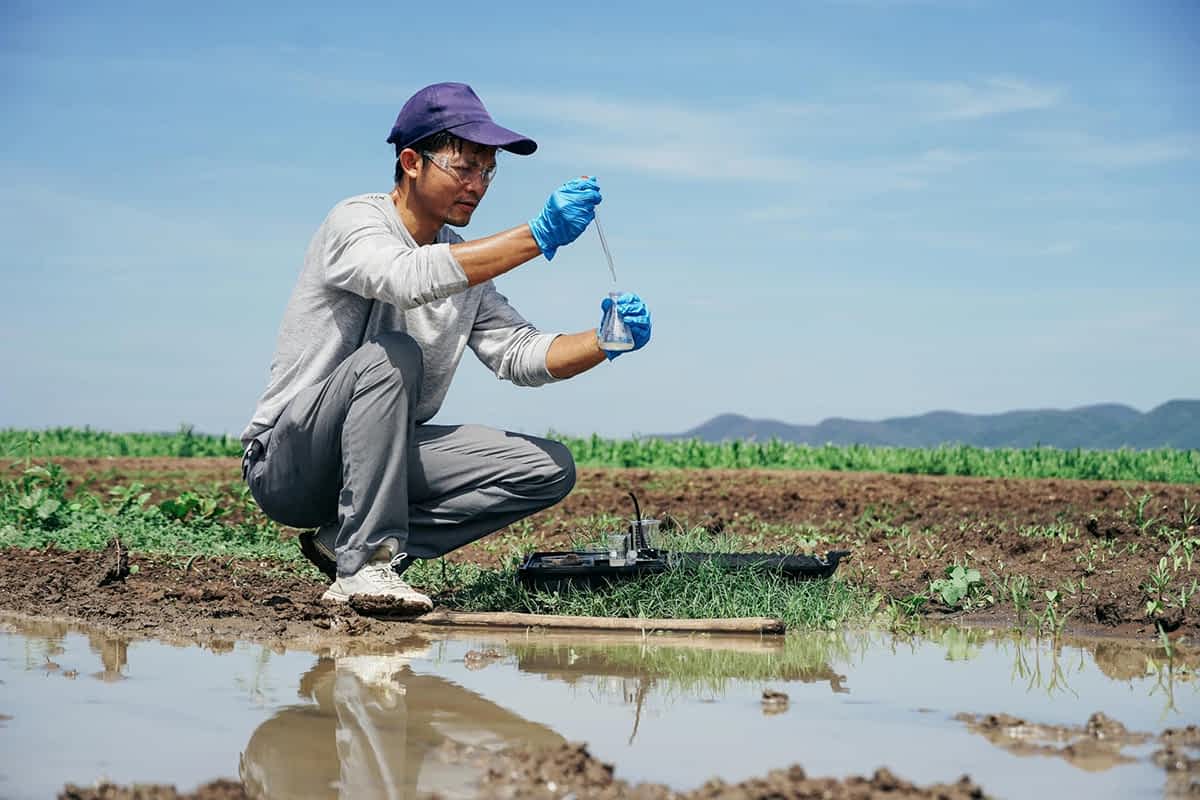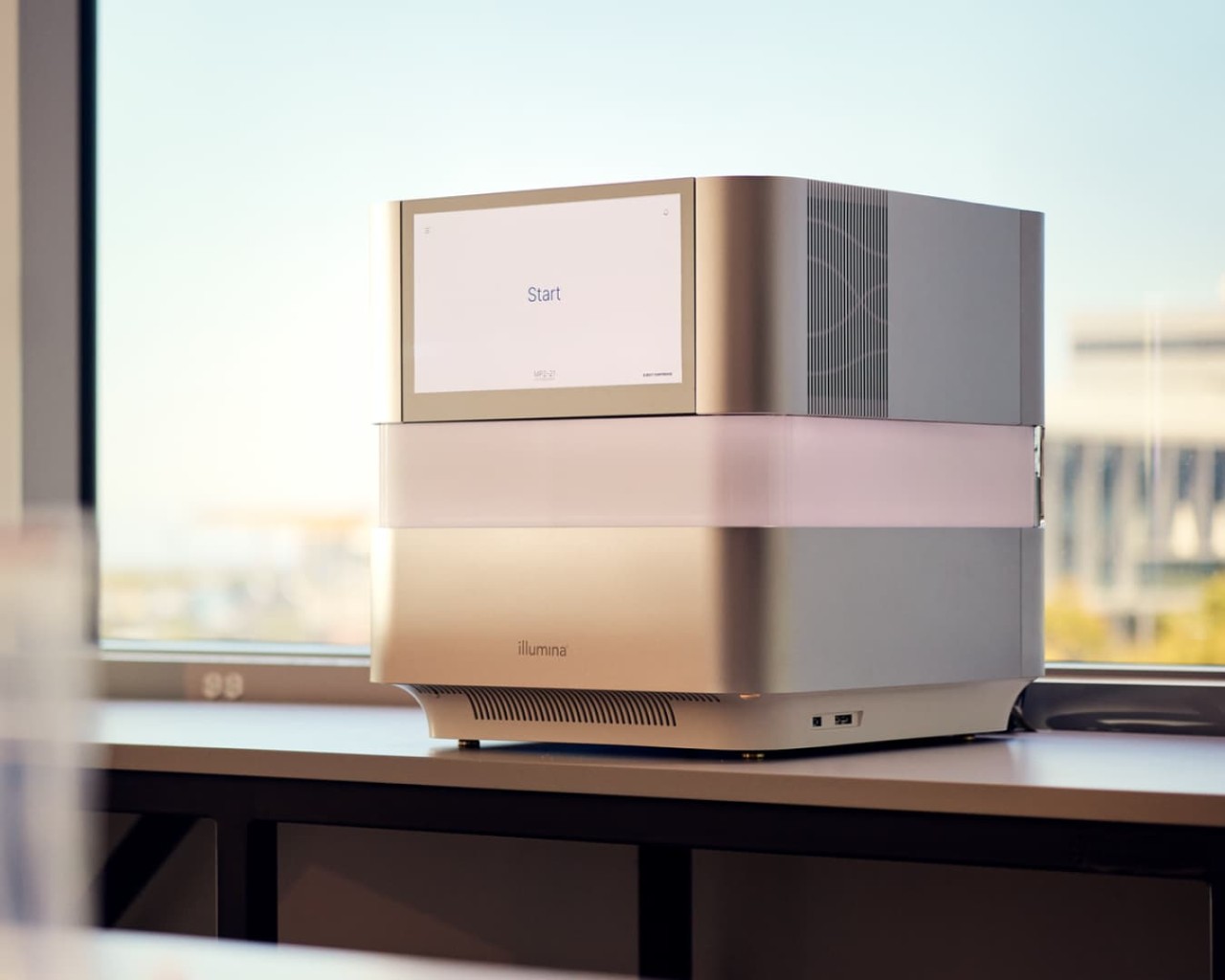ヒトマイクロバイオーム解析
NGSにより研究が進展し、培養不可能な生物のゲノムを含む微生物群集全体のゲノム調査ができるようになりました。その詳細をご確認ください。
培養を必要としないNGSベースのITSおよび16S rRNA遺伝子シーケンシング法を用いて、複雑なマイクロバイオームや環境中の微生物を同定し、比較することができます。
16SおよびInternal Transcribed Spacer(ITS)リボソームRNA(rRNA)シーケンスは、与えられたサンプル内に存在する細菌や真菌を同定し比較するために用いられる一般的なアンプリコンシーケンス法です。次世代シーケンサー(NGS)ベースのITSおよび16S rRNA遺伝子シーケンスは、複雑なマイクロバイオームや調査が困難または不可能な環境からのサンプルの系統や分類を比較するために確立された方法です。これらの培養不要の手法により、サイエンティストは他の手法では探索できない細菌や真菌を同定することができます。
原核生物の16S rRNA遺伝子は、約1500bpの長さで、保存領域の間に9つの可変領域があります。16S rRNA遺伝子の可変領域は、多様な微生物集団における属や種の系統分類にしばしば用いられています。1rRNAシストロンのITS1領域は、複雑なマイクロバイオームサンプルで真菌種を同定するためのDNAマーカーとして一般的に用いられています。2

次回のワークフローから手探りをなくしましょう。NGSワークフローファインダーは、パーソナライズされたソリューションの提案とリソースを提供し、自信を持ってシーケンスが進められるようサポートします。
16SおよびITSリボソームRNA NGS手法の大きなメリットは、従来の方法では探索できない微生物を同定するためのコスト効率の良い技法が得られるという点です。キャピラリーシーケンシングやPCRベースの手法とは異なり、次世代シーケンサーは培養を必要としないため、サンプル内の微生物群集全体を解析することができます。
16S rRNA NGSにより、細菌学者は細菌集団の多様性分析において属レベルの感度を達成することが可能です。NGSを用いたITS解析により、真菌を迅速に同定することができ、マイコバイオームに関する理解を深める一助となります。さらに、NGSを活用すれば、1回のシーケンスランで複数のサンプルを同時に解析することもできます。
このガイドでは、細菌群集および微生物群集の分類学的プロファイリングのためのソリューションについて学ぶことができます。イルミナのNGSワークフローは、ライブラリー調製、シーケンス、データ解析を統合します。
ご提供いただいた個人情報は、お客様へのサポート、サービス、および販売活動の目的にのみ使用させていただきます。
16SおよびITS rRNAシーケンスなどのシーケンシングアプリケーションで使用するライブラリーを迅速かつ一体的に調製するためのワークフロー。
ライブラリーのクリーンアップおよびサイズ選択用ビーズ(30mL、100mL、400mLサイズ)。製品群は、Illumina DNA Prep製品ページの「アクセサリー製品」からご覧いただけます。チラシをダウンロード
迅速でコスト効率の高い16SおよびITSシーケンスアプリケーションに最適な、強力かつコンパクトなシステム。
包括的なワークフローにより、プロセス全体を通して研究の成果に貢献します。
GreenGenes分類学的データベースのイルミナ精選版を用いて、16S rRNAターゲットアンプリコン解読の分類学的手法を実施します。
NextSeq 1000およびNextSeq 2000システムなら、効率的かつハイスループットで微生物群集を解明でき、ラボで活用することができます。その詳細をご紹介します。

この方法により、微生物学者は細菌の多様性を評価し、さまざまな環境における微生物の存在量を検出することができます。また、他の方法では分析が困難な(または不可能な)培養不可能な微生物を研究することもできます。その詳細をご紹介します。
複雑な微生物群集から発現したmRNAを総合的に研究する方法についてご紹介します。 この手法により、研究者は特定の時点で微生物が特定の環境にどのように反応するかについて、重要な洞察を得ることができます。
16S rRNAは、すべての細菌および古細菌に存在するリボソームのサブユニットです。全長は1500ヌクレオチドで、保存領域の間に9つの可変領域が挟まれています。
16S rRNAシーケンスは、複雑なマイクロバイオームや研究が困難な環境における細菌の多様性を同定して比較するための培養不要の手法です。16S rRNAは、所定のサンプル内に存在する細菌を属や種レベルまで同定するために使用されるのが一般的です。具体的には、16S rRNAという細菌特有の遺伝的マーカーをターゲットにするアンプリコンベースのシーケンシング手法であり、1つの遺伝子に焦点を当てた単一アンプリコンを使用します。
16S rRNAシーケンスは細菌と古細菌に広く存在するため、単一のサンプルや単一のワークフロー内で多様な微生物を同定することができます。16S rRNAシーケンシングを通じて、サンプル内に存在する分類群を同定することができます。これにより、微生物群集の構造や、それらが人体や環境とどのような相互作用を見せているかについての理解が深まります。
リボソームとそのサブユニットは、沈降係数によって特徴づけられ、その係数はスヴェドベリ単位(記号:S)で表されます。この場合、16Sとは、リボソームが溶液中で沈降するのに16スヴェドベリ単位の時間がかかることを意味します。
すべての細菌と古細菌が16S rRNAシーケンスを有しています。
16S rRNAのアンプリコンシーケンシングでは、使用されるプライマーが、細菌間で100%保存されていない領域内に結合します。そのため、特定の細菌の一部の領域がシーケンシングに含まれないことがあります。さらに、葉緑体は16S rRNA遺伝子とある程度の相同性を持っており、増幅される可能性があります。また、マイクロバイオームのサンプルは多様なソースから得られ、その組成もさまざまであるため、新しいサンプルタイプを調査する際にはコントロールサンプルを使用することが推奨されます。
16S DNAとは、細菌ゲノム中の16S rRNAをコードする遺伝子を指します。16S rRNAは、16S DNA遺伝子から転写されるrRNAです。イルミナの16Sメタゲノムシーケンシングライブラリー調製プロトコールでは、DNAを入力として使用し、アンプリコンPCRのために16S rDNA遺伝子の可変領域V3とV4をターゲットにしたPCRプライマーを使用します。
16Sデモプロトコールでは、任意のターゲットからイルミナ互換のライブラリーを作成するオプションが提供されています。真菌やその他の生物には16S rRNA遺伝子はありませんが、18SやITS領域などの他の保存領域は有しています。どのようなアンプリコンでも、同様の多様性解析研究に使用することができます。
rRNAシストロンの内部転写スペーサー1(ITS1)領域は、メタゲノムサンプルにおいて真菌種を同定するために用いられるDNAマーカーとして広く使用されています。 2
16SおよびITS rRNAシーケンシングについて詳しくはこちら
ご提供いただいた個人情報は、お客様へのサポート、サービス、および販売活動の目的にのみ使用させていただきます。